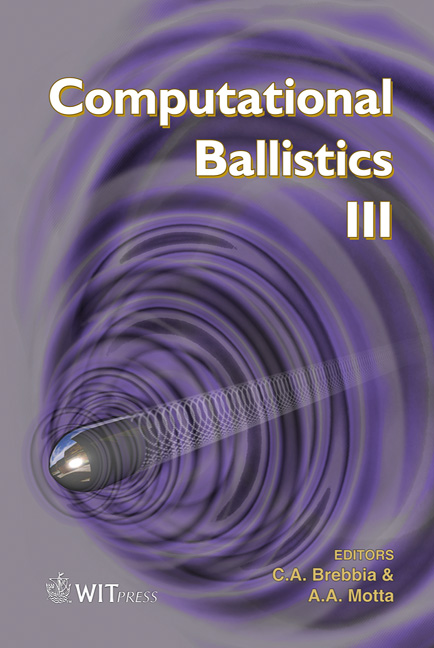Evaluations Of Computational Techniques For The Engraving Of Projectiles
Price
Free (open access)
Transaction
Volume
45
Pages
10
Published
2007
Size
574 kb
Paper DOI
10.2495/CBAL070181
Copyright
WIT Press
Author(s)
J. South, B. Powers & M. Minnicino
Abstract
This paper presents research on the evaluations of computational methods used to model the engraving of small caliber projectiles. The launch mechanics of a 5.56 mm projectile fired from a rifled barrel based on a M16A2 are examined in this study. The interaction between small caliber projectiles and rifled barrels is evaluated using finite element analysis (FEA) simulations utilizing the 3D explicit dynamic FEA LS-DYNA code. The calculations were performed to understand the interaction of the projectile during the initial portion of launch, where the projectile is subjected to the dynamic pressure from the combustion of the charge. The modeling parameters investigated include the order of element integration, the hourglass control scheme, and contact algorithms. The stress and strain state within both the projectile and the barrel are evaluated and compared to experimental data. The results show that a comparison of global hourglass energy to internal energy can lead to improper conclusions about the validity of the engraving model. The choice of the hourglass scheme and contact algorithm affects the hourglass energy and may affect the internal energy. This effort has led to increased insight into the behavior of the engraving process on small caliber projectiles and the numerical techniques necessary to reduce modeling difficulties. Keywords: engraving, projectile, hourglass. 1 Introduction Correct simulation of the engraving process is crucial for the design of obturation and prediction of in-bore dynamics. In addition, given realistic constitutive models, consideration of the utility of different materials for the bullet can be made. Unfortunately the engraving process is a difficult
Keywords
engraving, projectile, hourglass.




